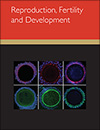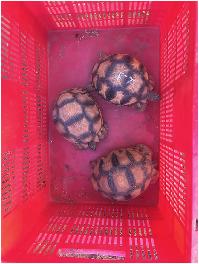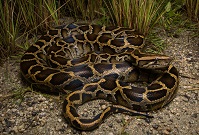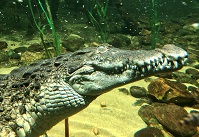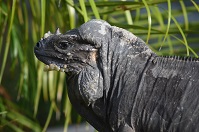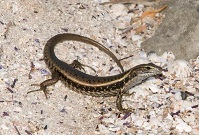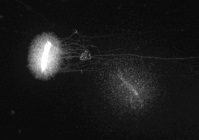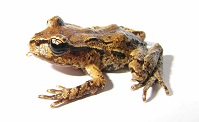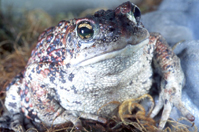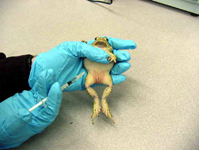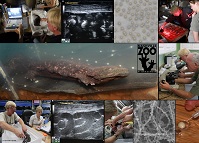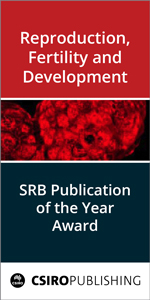Reproduction, Fertility and Development
Volume 34
Numbers 4 & 5 2022
Special Issue
Amphibian and Reptile Assisted Reproductive Technologies Part II
Guest Editors:
Natalie Calatayud (San Diego Zoo Wildlife Alliance, Beckman Center for Conservation Research and Conservation Science Network)
John Clulow (The University of Newcastle and FAUNA Research Alliance)
Simon Clulow (University of Canberra and FAUNA Research Alliance)
Gina Della Togna (Universidad Interamericana de Panama and Smithsonian Tropical Research Institute)
Ruth Marcec (Honduras Amphibian Rescue and Conservation Center)
Progress in applying assisted reproductive techniques (ART) to reptiles has occurred at a tortoise pace, this review summarises ART research that has been completed in reptiles since the 1970s. Currently the future for reptiles is bleak, with extinction rates expected to increase over the next 30 years, the time is now to accelerate development of ART in reptiles.
Spermatozoa were collected from the Burmese python as a model for the development of cryopreservation protocols for endangered snakes. Post-thaw viability was assessed after freezing in the two most common sperm cryoprotectants, dimethyl sulfoxide and glycerol, either singly or in combination. Overall, the dual cryoprotectant treatments enhanced motility and plasma membrane and acrosome integrity.
The critically endangered Philippine crocodile is facing extinction in the wild due to a variety of factors. To maintain a genetically diverse population outside the Philippines, Omaha’s Henry Doorly Zoo and Aquarium has initiated a captive breeding program for this species. However, little is known about its reproductive biology. The seasonal profile of sperm production reported here is a critical first step in establishing assisted reproductive technologies in the Philippine crocodile.
Iguanas from the genus Cyclura are the most endangered iguanas in the world. Two species of Cyclura iguanas were followed during the reproductive season to determine changes in testosterone concentrations and testicle size. Semen was successfully collected from one species. This study lays a physiological foundation to further develop assisted reproductive technologies for the genus Cyclura to enhance their in situ and ex situ conservation efforts.
There is great scope to enhance genetic management within reptile conservation breeding programs by applying assisted reproductive technologies. We compared the efficacy of three sperm dilution media and two cryoprotectants to preserve sperm viability following cryopreservation by two methods. We found spermatozoa could survive freezing using either method provided the appropriate combination of buffer and cryoprotectant was used. This presents two alternative approaches worthy of further investigation for the cryopreservation of sperm from skinks both in the wild and ex situ.
In anurans, spermatozoa are released into the cloaca after hormone stimulation of spermiation, and time inside the cloaca until sperm collection could affect sperm quality due to their dilution in the urine and resultant activation of motility. In this study we analysed the effect of time inside the cloaca on sperm motility and sperm DNA integrity, showing better motility in spermatozoa kept for shorter periods. In addition, we describe the implementation of SCSA with amphibian spermatozoa.
Assisted reproductive technologies are useful tools to improve captive breeding programs for threatened species. The frogs native to Aotearoa New Zealand are all threatened with extinction and captive breeding programs to save this archaic lineage of frogs has failed. The goal of this study was to use hormones (gonadotrophin-releasing hormone agonist and human chorionic gonadotrophin) to attempt to induce mating and sperm collection in the threatened Hamilton’s frog. The hormone doses trialled in this study resulted in poor spermiation responses for this species and no mating.
With high-elevation amphibian species declining at an alarming rate, it has become critically important to establish captive assurance colonies for recovery programs. Unfortunately, we know very little regarding alpine amphibian reproductive physiology and the role hibernation has in regards to gametogenesis. Here, we report that hibernation has an important role in establishing optimal sperm concentration and quality in the alpine boreal toad, which will assist in best management decisions for breeding this threatened species.
Captive assurance colonies for threatened amphibians have been established as a hedge against extinction; yet, many of these new programs are unsustainable due to low reproductive output. Through the use of hormone therapy and IVF, some of these challenges might be overcome, especially asynchronous gamete release. Here, we describe best management practices for the cold storage of anuran sperm and how sperm stored under optimal conditions can fertilise eggs up to 8 days after hormonal collection.
The North American giant salamander Cryptobranchus alleganiensis is evolutionarily distinct, with only two extant Old World relatives. This iconic species, the largest salamander in the Americas, has gone through declines of ≥90% throughout most of its historic range since 1990. Assisted reproduction technologies are being developed that may help conserve this species in the future.


